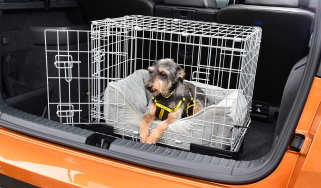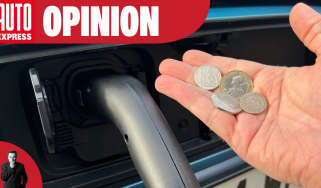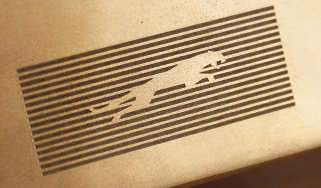Driving in France: what do I need to drive in France
Our guide to driving in France has advice, tips and a car checklist to keep you safe and legal

With stunning countryside views, bustling cities and fantastic driving roads, there’s no wonder that France is a popular road trip and driving destination for Brits. Before you start planning your trip or get behind the wheel, driving in France is a little different than what we’re used to here in the UK and there are certain requirements you need to follow.
To make your trip to France and mainland Europe as stress-free as possible, this guide covers everything you need to know about driving in France – from the documents you’ll need and French road laws, to staying safe on the roads and tips on the equipment you shouldn’t bring across the channel.
Which documents do I need to drive in France?
To drive in France, you must be 18 or older and hold a full and valid UK driver’s licence – this includes licences which were issued in the Isle of Man, Guernsey and Gibraltar. UK drivers will also need to take proof of car insurance and your vehicle's V5C registration certificate. You will also need a valid passport as a form of ID to sit alongside your driving licence.
It is no longer a requirement for UK motorists to carry an insurance Green Card, and you do not need to carry an International Driving Permit, either.
What do I legally need to carry in my car when driving in France?
In order to drive in France legally, there are a number of items you must have in your car. Failing to have the right documents or pieces of equipment to hand could result in some hefty fines of up to €135 per item missing if you happen to be pulled over or stopped by French authorities.
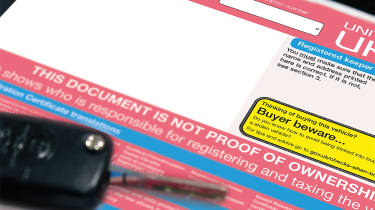
Mandatory items required by law:
French law requires each car to carry warning triangles and high-visibility jackets for all occupants in the event of a breakdown. Both the high-vis and warning triangle should be fluorescent, easily accessible and marked with ‘EC’ for European Compliance.
Drivers in right-hand drive cars will also need to fit headlamp beam deflectors to avoid dazzling other road users. Not all cars will require headlight beam deflectors, those fitted with LED headlights or cars with manual beam adjustment, for example. It’s best to check your car's manual or requirements beforehand.Headlight beam deflectors, as well as high-vis jackets and warning triangles feature in many European Travel kits.
Winter tyres and snow chains are not compulsory throughout the entire country, but are recommended when driving in France between 1 November and 31 March. If you are driving through ‘snow zones’ or in the five major mountain regions (Alps, Corsica, Jura, Massif Central, Pyrenees and Vosges), winter tyres and snow chains are compulsory.
UK stickers:
Your car must be fitted with a UK sticker or UK signifier on your number plate – these UK badges have replaced the previous GB lettering. If you have a GB sticker it must be removed and replaced or completely covered by the new UK sticker. If you have a GB-branded number plate, this must also be accompanied by a UK sticker.
Clean air stickers:
When travelling in certain French towns and cities, you will need a ‘Crit’Air’ clean air sticker.
Similar to the London ULEZ zone, Low Emission Zones (LEZ) or Clean Air Zones (CAZ) in the UK, regions of France have started to place restrictions on the heaviest polluting vehicles from entering certain towns and cities.
This Crit’Air clean air sticker needs to be purchased online by entering your vehicle’s details, the system will place your car into a numbered category depending on the level of pollution, then the sticker makes this number visible to the French authorities.
The categories of vehicle that can enter French clean-air zones varies between cities, so it is important to check beforehand. Some categories are now banned from certain cities entirely.
The price for a Crit’Air sticker including shipping outside of France is €4.76 (around £4.00). It is advisable to order this as far ahead of your journey as possible to allow for shipping delays. Failure to display this sticker could land you a fine of €68. You can find out more on the French government website. Once you have purchased a Crit’Air sticker, this lasts for the lifetime of the car and will not change.
Is there anything that I shouldn’t take with me?
You should not use or carry any speed camera detectors, radar kits, hands-free and Bluetooth mobile devices while driving in France. Certain food items are also strictly prohibited too.
Speed camera detectors and radar detectors are illegal in France and you risk a fine of up to €1,500 if you are caught using one or if you have one in your possession. Those using sat-nav systems with camera warnings must disable this feature by law.
Anyone caught using hands-free or Bluetooth devices also runs the risk of a €1,500 fine, as well as your licence being confiscated on the spot.
There are also some strict rules on transporting food items. Meat, milk and dairy products are prohibited. You need to pay to have fresh fruit, vegetables, plants or plant products inspected before you cross the border too.
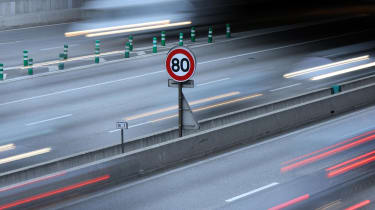
What is the legal age for driving in France?
As a visitor to France, if you're over 18 and hold a full driving licence that's recognised by the French authorities, like a UK driving licence, you are legally able to drive in France. To ride a motorcycle or moped up to 125cc you must be aged 16 or over.
Car insurance and breakdown coverage for driving in France
Most UK car insurance companies allow for 90 days of cover in EU countries – but the majority will only provide third party cover. Confirm the type of insurance cover you will have in France before you leave.
Unlike insurance, breakdown cover is not a mandatory requirement in France. It is nevertheless a welcome addition to any long journey. The bigger breakdown providers will offer Europe wide coverage, but this is often an added policy. Check with your provider the type of cover you have, and if necessary you can purchase single trip covers online.
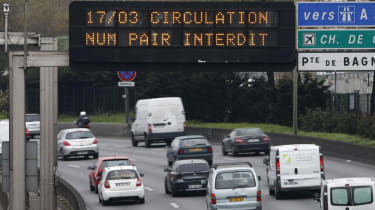
French road rules
Driving in France is slightly different to the UK. While things like road signs will be fairly similar to those we have on UK roads, road priorities, the drink drive limit and regulations will be different.
Rules for priority driving
In France, they drive on the right hand side of the road. At crossings and junctions, you give priority to traffic coming from the right, unless otherwise indicated. If you are entering a roundabout, then you must give way to traffic already on the roundabout. Emergency service vehicles with lights and sirens also have priority and you must give way to these vehicles.
Overtaking and passing
When overtaking a pedestrian or cyclist, you must leave a gap of at least one metre when travelling in urban spaces, or one and a half metres when overtaking outside of urban settings. You are allowed to cross the continuous white line, but only if it’s safe to do so.
When overtaking on the motorway, you move into the lane to your left. Once you have passed the vehicle you’re overtaking, you fall back into the outer lane on the right hand side. Do not sit or hog the middle lane.
Seat belt laws
When driving in France, if your car is fitted with seat belts, then you must wear them. It is the responsibility of the driver to ensure that all passengers under the age of 18 are wearing their seat belt. Failing to wear a seat belt will result in a fine of €135, reduced to €90 if it is paid within 15 days.
Traffic lights
- Like the UK, a red traffic light means stop, amber means proceed with caution and green means proceed if it is safe to do so.
- If a traffic light is flashing red, then this means no entry and you must not drive down that road.
- A flashing amber light indicates that you must slow down, proceed with caution but give way to cars coming from the right if applicable.
- If a red light is followed by a yellow directional arrow, then you may proceed with caution in the direction indicated by the arrow. You will need to give way to cars travelling in that direction, as well as pedestrians.
Speed limits
Speed limits in France are measured using the metric system, so distances and speeds will be indicated in kilometres and metres.
Certain classes of vehicles are speed restricted on the motorway, and unlike the UK, speed limits are lowered in wet weather and adverse conditions to help improve road safety. There is a minimum speed limit of 80kph for vehicles travelling in the outside lane of the motorway.
Below are the national speed limits in France:
| Motorways | Priority roads and dual carriageways | Other roads (A+B roads) | Urban environments | |
| Normal traffic conditions | 130kph | 110kph | 80kph | 50kph |
| Rain and wet weather | 110kph | 100kph | 70kph | 50kph |
| Visibility less than 50 metres | 50kph | 50kph | 50kph | 50kph |
If you are caught speeding, then the standard fine for breaking the speed limit in France is €135, with penalty points added to your licence depending on how much you exceed the limit by. If you are caught exceeding the speed limit by 40kph or more, then you will have your driving licence confiscated on the spot by the police.
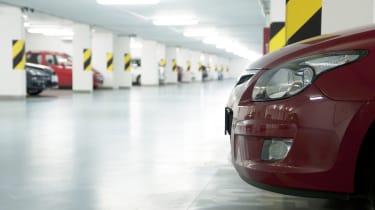
Parking regulations
Parking in France can be highly regulated, so it’s good to know where you can and can’t park.
Car parks and multi-story car parks are fairly common in major towns and cities across France, with many operating in the same way as car parks here in the UK. You take your ticket upon entering the car park, and pay upon exiting at the barrier or at the machine when you return to your car. Some will require you to purchase a ticket for a set period of time and must be displayed in your windscreen.
Parking on the street in France is fairly common and allowed, unless marked otherwise. You may be required to pay for parking in residential areas, in which case you will need to find a parking meter or payment machine with many accepting cash, bank cards and payments by phone. Of course, if you are parking on the street, avoid parking in front of driveways, on yellow lines or dangerously parking as you may receive a parking ticket.
Some residential areas will have ‘blue zones’ where you can park for free if you display a blue parking disc. The maximum amount of time you are allowed to park in a blue zone will be clearly marked. When you park, set your arrival time on the blue disc and place it in your dashboard. The blue discs can be purchased at a Tabac or Maison de la Presse for a small fee.
Disabled parking spaces are common throughout France and clearly marked with a wheelchair symbol. You can use your UK issued disabled blue badge in France and it must be clear and visible on the dashboard of your car when parked.
For dangerous or illegal parking, you may receive a fine or parking ticket. These tickets can be stuck to your windscreen or sent directly to the address where the car is registered. Fines can range from €35 to €135 for the most dangerous offences. Your ticket will tell you how you can pay the fine.
Drink driving
The drink-driving limit in France is 50mg of alcohol in 100ml of blood. Motorists found to have between 50 and 80mg of alcohol in 100m of blood could be fined €135 and have six points added to their UK licence.
If your blood alcohol level exceeds 80mg of alcohol per 100ml of blood, then you could face a fine of up to €4,500, imprisonment of up to two years and lose your UK licence.
Top tips for driving in France
- Drive on the right-hand-side. It may seem obvious, but remember France drives on the right side of the road.
- Driving on the motorway can be expensive. The motorway can be an expensive way to travel, with many of them being privately managed – in a similar way to the M6 Toll in the UK. French motorways are split by tolling stations that charge a hefty fee for passage, these will be clearly marked 'Péage' on the blue and white signs, and the payment can be made by cash or card.
- Be careful at the fuel pumps. When filling up in France, remember that ‘gazole’ means diesel, otherwise this could result in an expensive fuelling mishap. Diesel pumps will be colour coded yellow, while unleaded pumps are green.
- Watch for different speed limits in the wet and dry. On the French motorways the speed limit is 130km/h (80mph), and 110km/h in the wet (70mph), unless otherwise indicated. Like the motorways, dual-carriageways and other roads will often have two speed limits; the lower of the two is to be obeyed in wet and poor driving conditions.
- Pay careful attention to changes in speed limits. Once you reach cities, the speed limit drops to 50km/h (30mph) unless the signs say otherwise. Be careful with your speed, as any UK/EU driver found driving 40km/h above the limit will have their licence confiscated by the French authorities.
- Give way to the right. Most important when driving in busy cities, at unmarked intersections priority is given to those coming from the right, unless otherwise stated. This is why a second look to the right is always a good thing to remember.
- Back roads are a great alternative. An alternative to the Autoroute motorways (A-signed roads) is the French equivalent to A and B-roads – route nationale (N-signed roads) or the routes départementales (D-signed roads). These roads will add a few hours to the journey, but will swing you by the more scenic parts, small villages and the vineyards. Better still, they're free from tolls.
Driving in France checklist
Here’s everything you need to carry with you when driving in France:
- Full and valid driver’s licence
- V5C (or a VE103 document for rental vehicles)
- Proof of Insurance
- Passport/national ID
- Reflective jackets for all passengers
- Warning triangles
- Headlamp beam deflectors
- Spare light bulbs
- UK sticker or UK signifier number plate
- Crit’Air sticker
Things to leave at home when driving in France:
- Speed camera detectors or sat-navs with camera locations
- Hands-free and Bluetooth mobile phone kits
Driving in France FAQs
Frequently Asked Questions
To drive in France, you need a full and valid UK driving licence, a passport, your V5C logbook and valid car insurance. You will also need to carry reflective high-visibility jackets for every passenger, a reflective warning triangle, a UK sticker and headlight beam deflectors.
Now read our top tips for driving in Italy...



